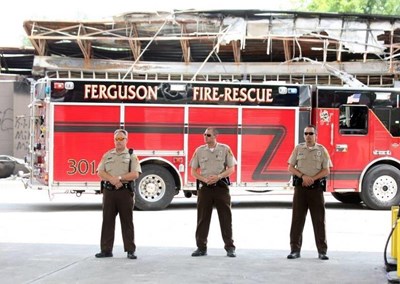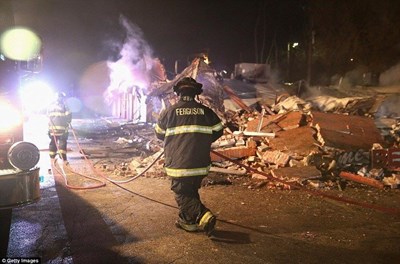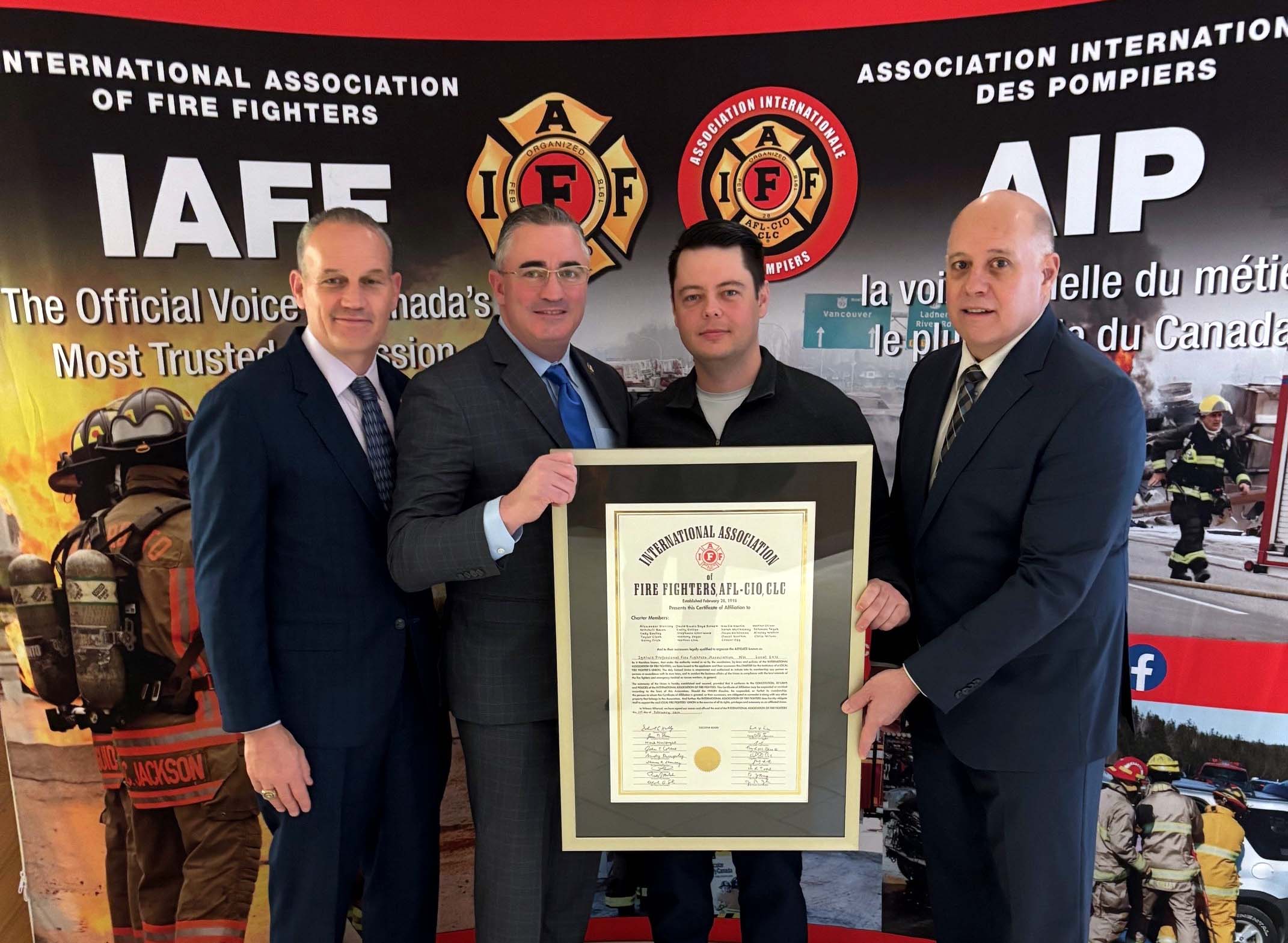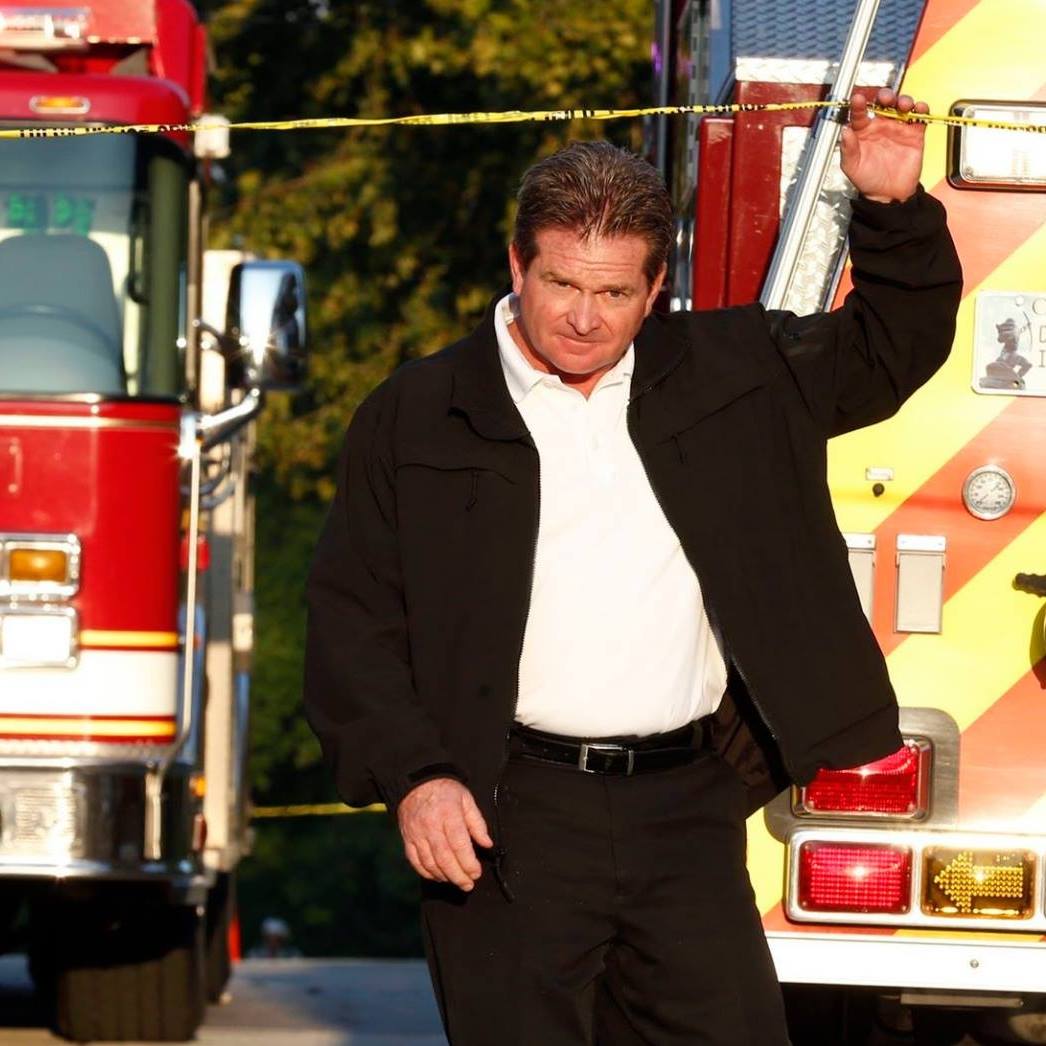First responders were well aware of the potential for looting and fires. In the days leading up to that moment, public safety officials met to devise a response strategy for operating under a unified command led by St. Louis County police.
As part of the plan, Governor Jay Nixon promised that National Guard troops would be in position to assist the police response and to protect fire fighters responding into areas where violence was occurring.
The IAFF assisted Fire Chief for Pattonville Fire District Terry Loehrer, a member of the Professional Fire Fighters of Eastern Missouri Local 2665, in the strategic planning, including providing standard operating guidance for civil disturbance response.
“When this began to unfold, we knew protesters could begin lighting fires and we intended to be ready,” says Loehrer, who also served as a Unified Area Command Deputy IC.
However, a last-minute decision by the governor to hold back National Guard troops put fire fighters in extreme danger and led to worsening violence and destruction, according to local fire department officials.
“When the emergency calls came in during the protests, Governor Nixon failed to deliver on his promise to protect the community and fire fighters with National Guard troops,” says Mark Woolbright, IAFF 2nd District Vice President and a St. Louis County fire fighter.

The fire response that night included four strike teams staged along five miles of West Florrisant Avenue, the site of related unrest in August. Quick response Task Force teams, which included two command officers, two pumpers, a ladder and an ambulance were readied as the first response to any incidents. As the night wore on, Loehrer says 24 fires were lit within a half mile radius on two major streets within the cities of Ferguson and Dellwood.
As part of the response plan, fire crews were instructed only to deploy after police had secured incident areas. Fire fighter responses were in several instances thwarted by swarming mobs of protesters – some of them peaceful and many with violent and destructive intent.
In one case, a ladder truck responding to a fire was surrounded by protesters jumping aboard the apparatus and others pelting the truck with debris. Chief Steve Rosenthal, the Ferguson Fire Branch IC, says the truck was stuck in the mob scene for several crucial minutes and only able to continue on to the fire ground after scores of peaceful protesters helped clear the way.
An Associated Press reporter covering the unrest that night reported witnessing fire fighters arriving at the scene of a burning building only to be turned back by gunfire that was coming from within the crowd of protesters. Police had been attempting to secure the area so fire fighters could attack the fire, but the police pulled back upon hearing the gunfire, and the fire fighters were compelled to pull back as well and seek safety.
“So often IAFF members have had to answer the bell, get on the rigs and place their lives on the line for their community as history is made around them,” says General President Harold Schaitberger. “The response and incredible professionalism under these extreme and difficult circumstances reflects the very best of those engaged in our profession.”
As the night wore on, it was clear that National Guard troops could have helped tremendously to control the chaos and give fire fighters the security they needed to do their jobs.
Fire fighters say they did not see National Guard troops arrive at key riot flashpoints until about 4:00 a.m. on November 25, several hours into the long night. The eventual arrival and disbursement of National Guard troops quickly changed the tenor of the situation and the violence died down. But that was well after dozens of properties were destroyed by fire and looting.

 IAFF members in Ferguson, Missouri, and other communities surrounding North St. Louis County worked frantically in the days following the November 24 release of the grand jury decision. Emergency calls came in mere minutes after the announcement that Police Officer Darren Wilson would not be indicted, and fire fighters worked nonstop to respond to dozens of fires and other reported emergencies.
IAFF members in Ferguson, Missouri, and other communities surrounding North St. Louis County worked frantically in the days following the November 24 release of the grand jury decision. Emergency calls came in mere minutes after the announcement that Police Officer Darren Wilson would not be indicted, and fire fighters worked nonstop to respond to dozens of fires and other reported emergencies.

